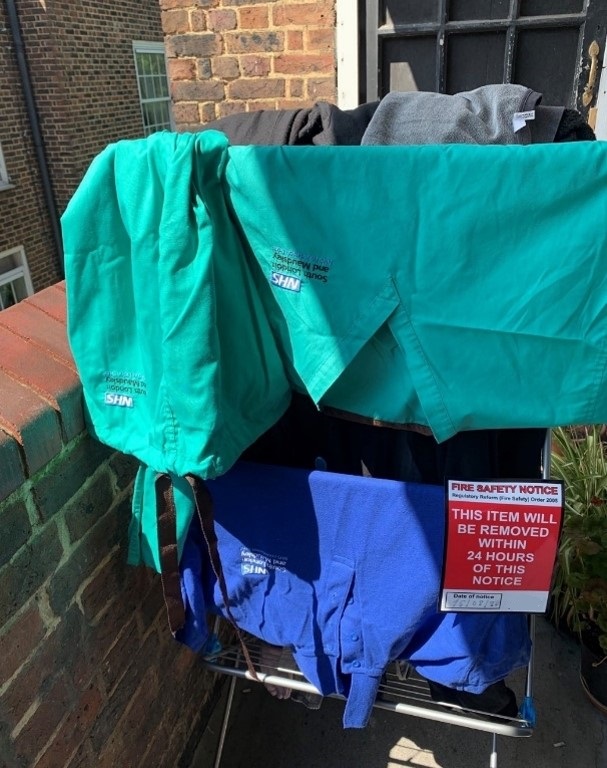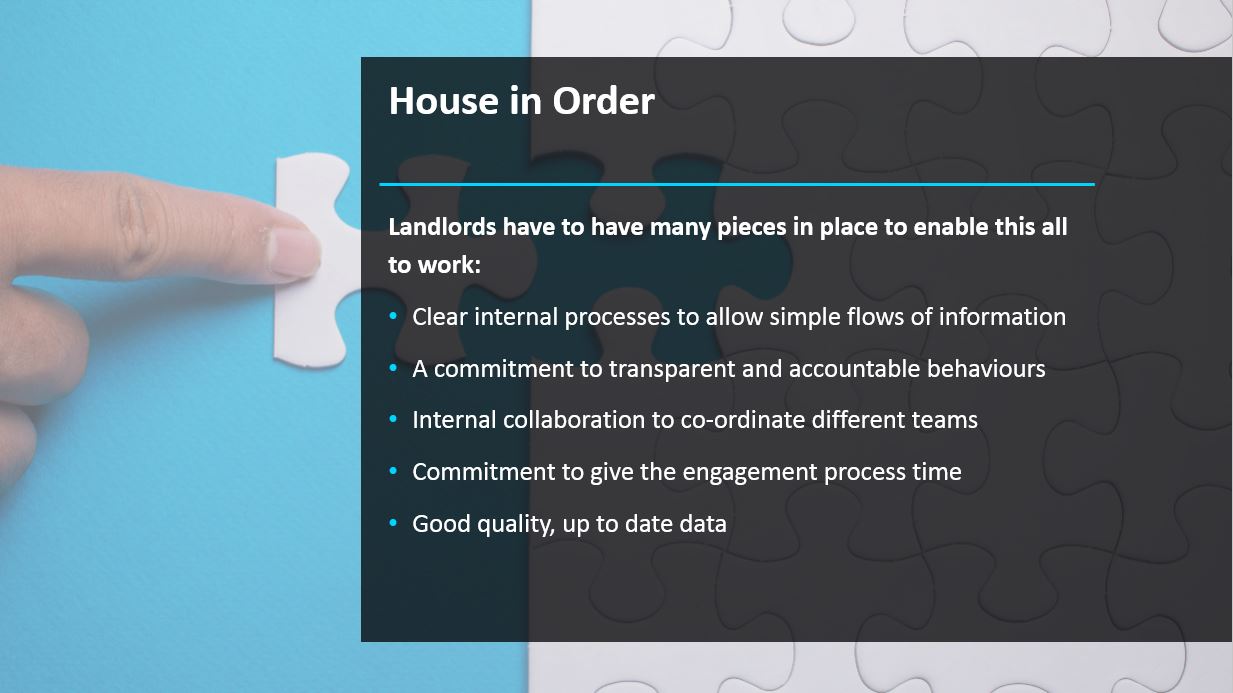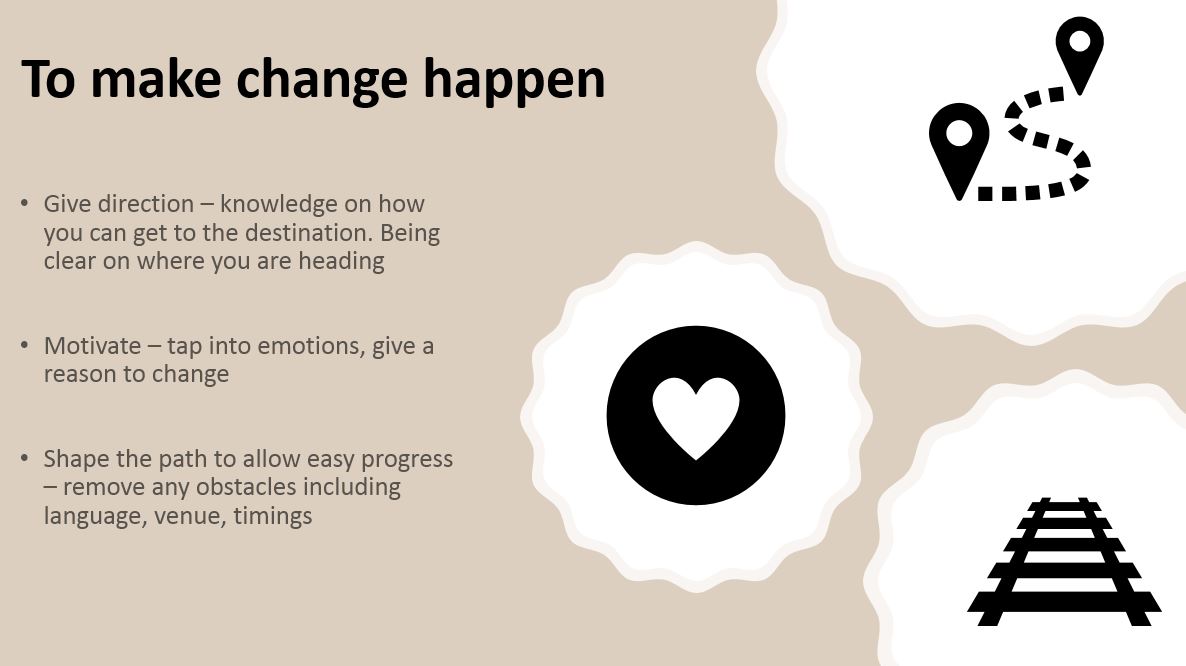Resident Engagement in Building Safety
Wednesday 27th of April 2022

Our National Consultancy manager Michael Hill reflects on some recent feedback that has helped to evolve our narrative around building safety resident engagement.
It’s been a few months since my last blog about this topic, and in that time, I have heard more compelling evidence that there has to be a fundamental change in landlord* behaviours for this topic to really make the impact needed.
I’ve spoken before about putting in place wider opportunities for residents to engage with their landlord and also about the cultural changes needed. This time I want to focus on some fundamental challenges that have the potential to undermine any potential improvements in resident engagement.
Collaboration
I’ve heard many comments recently about the lack of collaboration within organisations when it comes to a building safety response. It appears that some are approaching this with the same level of silo mentality that has been prevalent for years.
It is almost as though staff are saying ‘building safety is the responsibility of the building safety team’ and in some cases, some of that may be right. The one challenge I will lay at the sector’s door is that to make the change necessary, everyone must see how they can impact on this topic.
The plasterers, electricians, concierge, letting officers, anti-social behaviour staff, contractors, call centre staff, finance managers and operations directors all have a vital role. Whether it is picking up insight or intelligence, understanding local connectors or enabling the internal processes to support a more proactive organisation, everyone has a role, and it should not be under-estimated.
Ownership and Accountability
Landlords must develop behaviours where their staff take responsibility and clearly see their role in helping the organisation meet the building safety challenge. The safety of residents is Chapter 1 in the Charter for Social Housing Residents and staff will need to keep their eyes and ears open, be prepared to take ownership of what they hear and see, to ensure there really is no wrong door to a building safety issue.
Clear the path – make things easy
One of the key areas of concern I hear is that organisations are not so good at keeping their data current and up to date. This will be another vital issue within a building safety context – understanding who lives in the buildings and what (if any) needs they have.
It is one thing to ask residents to inform the landlord when circumstances change, but it is another to have systems and process in place that make this easy and simple to complete.
You could say ‘all you have to do is call the call centre team and tell them, they will make the adjustments’, but what about those who don’t want to call? You may then say, ‘log into the portal and make the changes you need to make’, and that would be something those who are happy with this type of interaction could quite rightly do.
But what I would say is test those theories, test those interactions – are they as easy to complete as you think? Is the tech easy to navigate and is it intuitive to those whose only online interactions are social media platforms and web browsing?
Are landlords clearing the path to make some of the basic interactions easy to complete?
Another topic of conversation in my sessions is dumping rubbish in bin stores or leaving things out that could become a fire and building safety hazard. People seem very intolerant to residents that do this, but I would say this, ‘what is it like for a resident trying to get rid of a TV box, or a settee, fridge freezer or anything else?’
If a landlord is not proactive at making it easy to know how and where to remove these types of items, then maybe more could be done. Are the bin stores adequate, have things changed that means more space is needed and is there interaction with residents to pick up trends and solutions?
If the sector is to rely on compliance notices and the big stick, it may find it is travelling a time-consuming, costly and stressful enforcement route that benefits very few.
Change in lifestyles
At a recent building safety training session, I was talking about residents understanding their responsibilities to keep themselves and their neighbours safe. We discussed things like candle safety, phone charging, appliance safety and towards the end we delved into overloading electrical sockets.
A participant spoke quite strongly about the lack of sockets in her home. She explained the changes in her household composition since she first moved in with children now part of her family. This increase in household numbers, added to an increase in technology and a now hybrid working arrangements meant that her electrical socket outlets were inadequate for their lifestyle.
At another session we discussed clothes drying areas. I Had shared a recent photograph of a set of clothes drying on a walkway of a block of flats which had a compliance note attached to them, asking them to be removed. The issue is not whether the clothes are a fire and safety risk as the landlord clearly had decided this. The issue was more about what is in place to enable a resident to dry their clothes outside if that is what they want to do.

What do landlords have in place to allow residents to make the decisions that will not negatively impact on their neighbours. In this instance why is the resident making this choice, is there a drying area and if so, is it a safe space? If the answer is no to both questions, then what are landlords doing about it?
So, when it comes to laying out expectations and responsibilities, maybe consider if landlords are helping, and whether they could do more.
Final thoughts
I want to finish by returning to my first point about collaboration. One participant at another building safety training session was so deflated that I thought it worthy of being my conclusion:
This young man said ‘all this (resident engagement) is great, it’s fine hearing what the role of the residents are and how we can help to keep things safe. It’s great to hear how the landlord might start to engage with a wider group of residents – but we as residents can only do so much. They (landlords) have to change the way they behave; they are the ones that can potentially stop any of this happening – they have to work together’.
That feeling of frustration, helplessness and complete lack of control was tangible. It really became something that I tend to focus about a lot in my training on this topic – that awareness, acceptance, and commitment to make the internal connections work.
*Under the Building Safety Bill and the proposed regulatory expectations, the responsibility for keeping residents safe will be in the hands of the Principal Accountable Person (PAP). That is the organisation that owns the structure of a building in scope of the Bill. In the social housing sector this is most likely to be the social housing landlord. For the purpose of this article the term ‘Landlord’ means the PAP’s that own buildings in scope.

